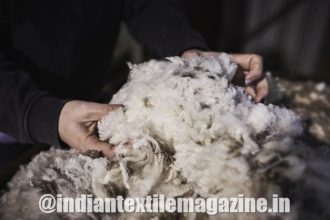A new textile laboratory study has assessed the fire resistance of the fabrics used in commercial base-layer garments for military and first responder personnel, such as firefighters, and concluded that the wool-rich fabrics offer the greatest skin protection, while the 100% synthetic fabrics performed the worst due to their propensity to melt and damage the skin.

From the Battle of Waterloo to the Korean War, wool’s inherent ability to protect the wearer from hostile environments, including extreme cold and fire, made it the military’s fibre of choice for outer-layer garments. Nowadays, the military and first-responders are looking to superfine wool base-layer garments due to the health and safety benefits offered by this ‘last line of defence’.
The increased demand has in part been driven by the incidence of injuries to military personnel in the Middle East, where battle techniques such as improvised explosive devices (IEDs) were used. Considerably more severe skin injuries occurred when synthetic base-layers were worn, as they can melt onto the skin at high temperatures.
“This growing market demand for wool base-layer garments relates to the already well-researched benefits of superfine Merino wool, including its softness next to the skin, moisture management, breathability – and fire resistance,” said The Woolmark Company’s Program Manager for Fibre Advocacy and Eco Credentials, Angus Ireland.
“In contrast to cotton and synthetic fibres, wool is known to have a natural resistance to burning, even when exposed to an ignition source for long periods. This is due to wool having a high ignition temperature, high limiting oxygen index and its self-extinguishing behaviour,” Angus said.

The new scientific study, undertaken by AgResearch and funded by The Woolmark Company, tested the degree of skin protection provided by commercial base-layer garments for military and first responder personnel. To enable a realistic assessment of the protection offered by the base-layer garments, a new ‘skin simulant’ test method was designed using samples of fresh pig skin (ex vivo).
The study concluded that blends of wool and fire resistant treated viscose performed the best, while the 100% synthetic fabrics (polypropylene and polyester fabrics) performed the worst.
Angus says the results show that there is significant potential for wool rich base-layers to be used for protection as well as comfort by the military and emergency responders.
“This new test method demonstrated that while synthetic fabrics might be the most cost effective with regard to procurement, they would offer very little protection to the wearer,” Angus said.





